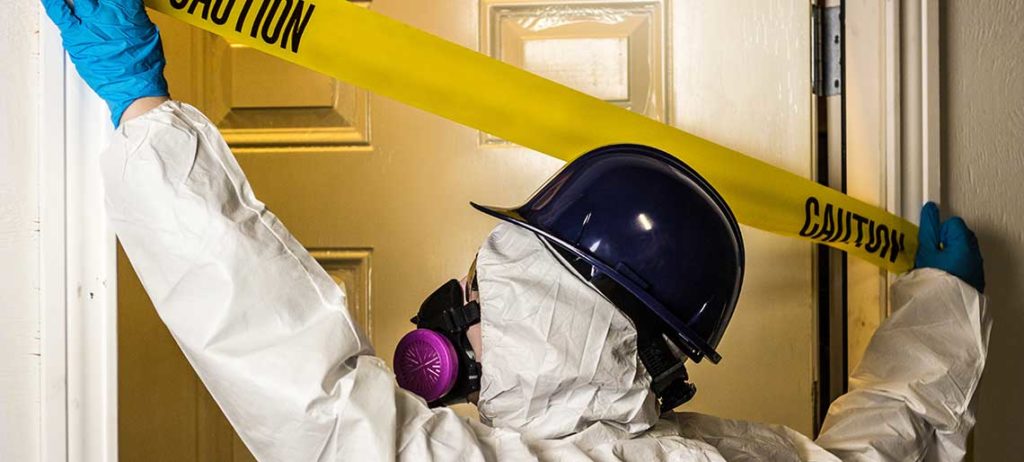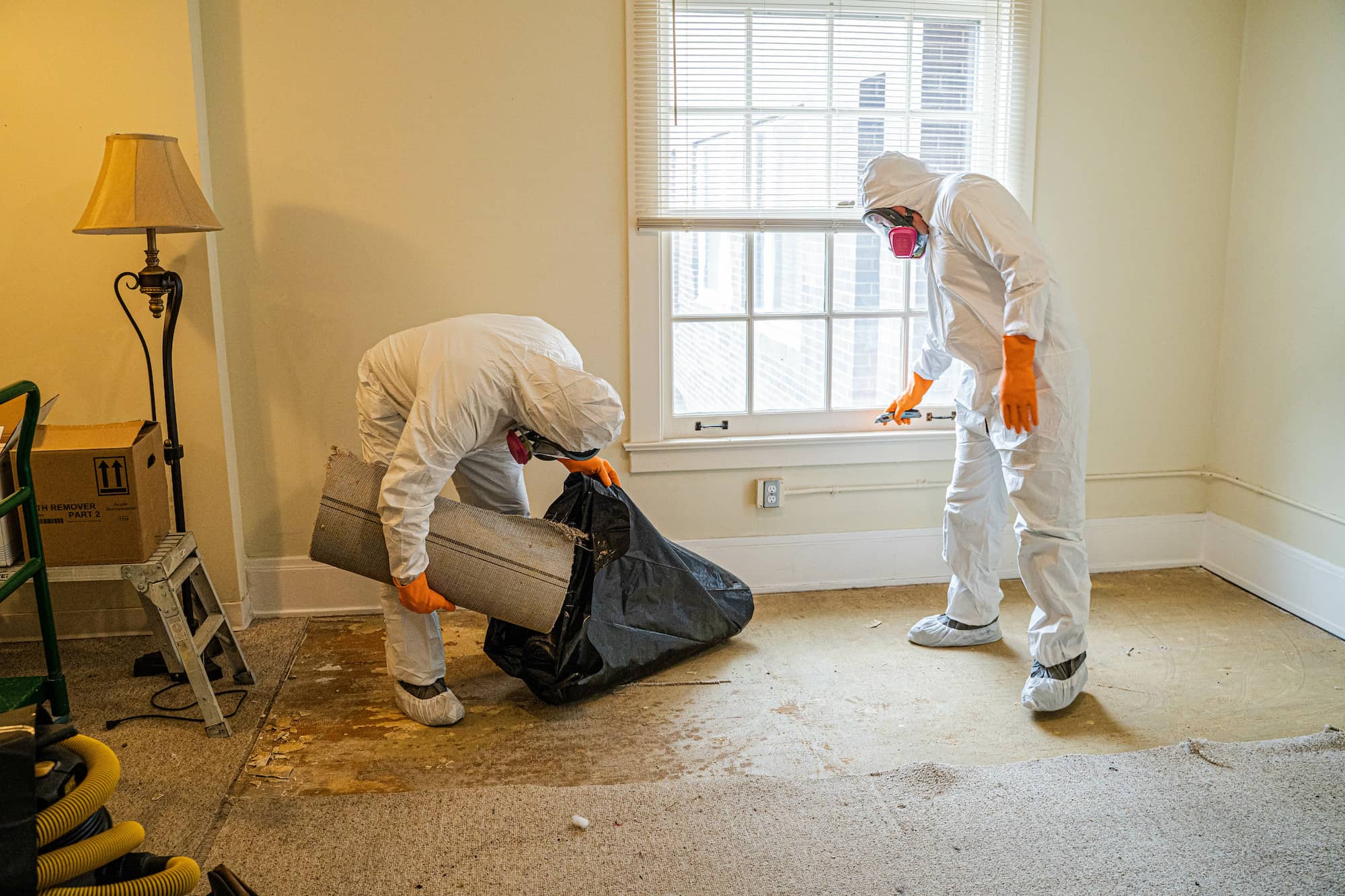Clandestine Lab Cleanup: Comprehensive Decontamination for Hazardous Sites
Clandestine Lab Cleanup: Comprehensive Decontamination for Hazardous Sites
Blog Article
Expert Biohazard Cleaning and Decontamination for Blood, Bodily Fluids, and Hazardous Materials
In the world of biohazard cleansing and decontamination for blood, bodily liquids, and unsafe products, accuracy and experience are extremely important. The prospective health threats related to exposure to biohazards underscore the essential requirement for precise handling and thorough cleaning. Specialized training furnishes professionals with the expertise and skills necessary to resolve these dangerous situations successfully. However, it is not just regarding tidying up; the value of employing appropriate decontamination methods can not be overstated. As we browse the intricate landscape of biohazard cleaning, comprehending the subtleties of policies, conformity, and the specialized devices at play comes to be necessary in guaranteeing a secure and thorough decontamination procedure.
Wellness Threats of Biohazard Direct Exposure
Exposure to biohazards poses significant health and wellness dangers that can cause extreme effects for people and communities alike. Biohazards encompass a wide variety of biological compounds, including blood, bodily fluids, mold, germs, viruses, and other potentially infectious materials. When individuals enter call with these biohazards, whether through crashes, inappropriate handling, or ecological direct exposure, they encounter the threat of having significant illnesses or conditions.
Among the key wellness dangers connected with biohazard exposure is the transmission of infectious diseases. Bloodborne pathogens such as HIV, liver disease B and C, and numerous microorganisms can be existing in biohazardous materials, positioning a direct threat to human wellness. Breathing in air-borne biohazards like mold spores or entering call with polluted surfaces can additionally cause breathing issues, allergic reactions, and various other unfavorable health and wellness effects.
Additionally, biohazard exposure can have lasting health ramifications, with some diseases showing up years after the preliminary contact (Blood Cleanup). Therefore, it is critical to focus on proper biohazard cleansing and decontamination to reduce these health and wellness dangers and make sure the safety and security of communities and people

Specialized Educating for Biohazard Cleaning
When it pertains to handling biohazard clean-up successfully and securely, specialized training plays a fundamental function in making certain correct decontamination procedures are complied with. Biohazard cleanup calls for specific understanding and abilities to properly mitigate risks connected with bloodborne microorganisms, physical liquids, and unsafe materials. Professionals learnt biohazard cleaning go through rigorous instruction on just how to securely handle, get rid of, and deal with biohazardous materials to stop contamination and direct exposure.
Specialized training for biohazard cleaning covers a variety of crucial subjects, consisting of correct personal safety equipment (PPE) usage, bloodborne microorganism understanding, decontamination methods, and hazardous waste disposal methods. Individuals learnt biohazard cleaning are outfitted with the needed proficiency to examine contamination degrees, identify prospective hazards, and implement ideal clean-up procedures in conformity with regulative standards.
Continuous training and education are paramount in the field of biohazard cleaning to remain upgraded on the current decontamination modern technologies, security methods, and policies. By purchasing specialized training, biohazard cleaning experts can efficiently react to emergency situation clean-up situations and guard both public health and wellness and the environment.
Relevance of Appropriate Decontamination Strategies
Using proper purification techniques is critical in biohazard clean-up to effectively remove dangerous materials and lessen health threats. Effective purification not only makes sure the removal of noticeable traces of blood, physical fluids, and various other biohazards but additionally targets unnoticeable virus that may present serious health and wellness hazards if not appropriately eradicated. By complying with rigorous decontamination procedures, educated professionals can dramatically reduce the danger of direct exposure to dangerous bacteria, infections, and bacteria that could cause infections or diseases.
Appropriate purification techniques include using customized equipment and disinfectants that are particularly created to counteract biohazards efficiently. Detailed cleansing and disinfection of polluted areas are crucial to prevent the spread of pathogens and guarantee a risk-free atmosphere for owners. In addition, the proper disposal of biohazardous waste following decontamination procedures is important in protecting against contamination of various other surface areas or people.

Tools and Devices for Safe Clean-up
The appropriate equipment and devices play a crucial duty in making certain the risk-free and efficient clean-up of biohazardous materials. When managing blood, physical fluids, or unsafe products, biohazard cleaning specialists count on specialized gear to decrease direct exposure risks and extensively decontaminate the damaged area. Personal safety devices (PPE) such as gloves, coveralls, goggles, and masks are important to safeguard versus direct call with potentially transmittable materials. In addition, biohazard cleaning packages including anti-bacterials, absorptive products, and biohazard bags are used to securely get rid of and include of infected products. Blood Cleanup.
Advanced cleansing devices like hospital-grade anti-bacterials, HEPA-filtered vacuums, and fogging makers are used to sanitize surfaces and eliminate biohazards properly. Specialized equipment such as sharps containers and biohazard waste disposal bins are biohazard cleanup pay used to safely handle sharp things and biohazardous waste products. By making use of the right More Help equipment and tools, biohazard cleaning experts can make sure a comprehensive clean-up process that prioritizes security and lessens wellness threats for both employees and owners of the damaged room.
Rules and Compliance in Biohazard Cleansing
Correct adherence to regulations and compliance standards is paramount in biohazard cleansing to ensure the safety of both personnel and the environment. Federal government agencies such as OSHA (Occupational Safety And Security and Wellness Administration) and the EPA (Environmental Protection Agency) have established particular standards for biohazard cleaning treatments to decrease wellness risks and environmental contamination. These policies cover a series of elements consisting of the handling, transportation, and disposal of biohazardous materials, in addition to the required training and protective equipment required for personnel involved in the cleanup procedure.
Biohazard cleansing business should stay up-to-date with these regulations to assure that their operations meet the called for safety and security requirements. Failure to follow these guidelines can lead to severe effects, consisting of fines, lawsuit, and endangering the health and wellness of individuals and the setting. By complying with strict laws and compliance measures, biohazard cleansing companies can properly alleviate risks and make certain a safe and detailed clean-up procedure for all parties entailed.
Final Thought
In conclusion, biohazard cleansing and decontamination need customized training, appropriate strategies, and adherence to policies. Direct exposure to blood, bodily liquids, and hazardous materials postures considerable wellness crime scene cleanup hourly rate risks, making it important to make use of the ideal equipment and tools for secure cleanup. By adhering to strict procedures and standards, professionals can efficiently mitigate the dangers connected with biohazard direct exposure and make sure the safety and security of both themselves and others.
As we navigate the elaborate landscape of biohazard clean-up, recognizing the subtleties of regulations, compliance, and the specific tools at play becomes essential in guaranteeing a detailed and safe decontamination process. (Blood Cleanup)
When it comes to handling biohazard cleanup efficiently and securely, specialized training plays a fundamental role in guaranteeing proper decontamination procedures are followed.Utilizing proper decontamination techniques is crucial in biohazard cleanup to effectively eliminate unsafe products and decrease health risks. In addition, biohazard cleansing sets including disinfectants, absorbent products, and biohazard bags are made use of to safely include and dispose of polluted items.
Federal government firms such as OSHA (Occupational Safety And Security and Wellness Administration) and the EPA (Environmental Security Firm) have established specific guidelines for biohazard cleanup procedures to decrease health and wellness risks and ecological contamination.
Report this page